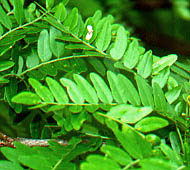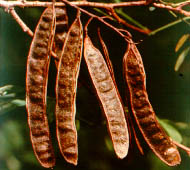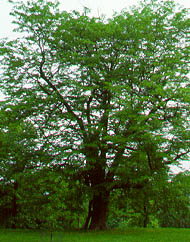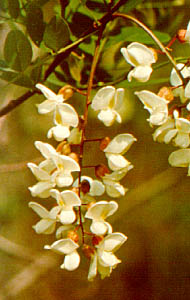Black Locust

Leaf Characteristics
- broad, flat
- compound
- pinnately compound
- margins smooth
- singly compound
- leaflets rounded at one or both ends
- tip of leaflet rounded

Fruit Characteristics
- in a pod or capsule
- in a flat pod
- pod has straight edges, not wavy
- pod light, 1/4 inch seeds
- pod tapers abruptly, seeds kidney-shaped
As Black Locust trees mature, the dark bark becomes marked with deep furrows and rounded ridges. The tree grows best in rich, moist soils of bottomlands and along streams, but also does well on waste land and on drier slopes. The hard, strong wood is very durable when in contact with the soil. It has been used extensively for mine props, railroad ties, and fence posts. This tree is planted on reclaimed land and to control erosion, and has been used for ornamental purposes. Although historically it probably was limited to southern Ohio, today the Black Locust is found throughout most of the state. The bark is poisonous for cattle who sometimes feed on young shoots. In contrast, rabbits often feed successfully on the bark during winter months. Birds, including Mourning Doves and Bobwhite Quails, eat the seeds.
 Tree Size
height 30' - 70'
diameter 1' - 3'
Tree Size
height 30' - 70'
diameter 1' - 3'
 Flower
Flower 